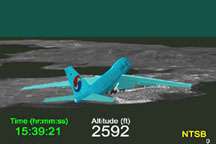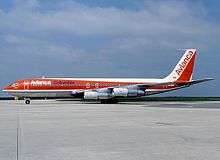Impact of culture on aviation safety

Culture can affect aviation safety through its effect on how the flight crew deals with difficult situations; cultures with lower power distances and higher levels of individuality can result in better aviation safety outcomes. In higher power cultures subordinates are less likely to question their superiors. The crash of Korean Air Flight 801 in 1997 was attributed to the pilot's decision to land despite the junior officer's disagreements, while the crash of Avianca Flight 52 was caused by the failure of the crew to admit to the tower that they were running out of fuel and ask for assistance. The crashes have been blamed on aspects of the national cultures of the crews.
Cultural differences in aviation
Hofstede classified national cultures into four dimensions, two of which can be applied to the flight deck: power distance, which defines the "nature of relations between subordinates and superiors", or "how often subordinates are afraid to express disagreement";[1] and whether the culture is collectivist or individualist in nature. Western cultures are individualistic and have a low power distance, whereas most Asian and Latin cultures are on the other side of the spectrum.[2] Low power-distance and high individualism in Western culture may have contributed to a better safety record than in Taiwan and India. In a more collectivist society like Taiwan, a possible explanation for this might be that personal decision-making skills are not as developed.[3] In Western society, the power-distance is lower in general; "making decisions, implementing them, and taking responsibility for their consequences" is part of their life, making personal decisions easier to make.[4][5]
Past incidents
Korean Air Flight 801

On approach to Guam in 1997, Korean 801 crashed, mainly due to pilot fatigue and poor communication between the flight crew. The captain made the decision to land despite the junior officer's disagreements, eventually bringing the plane down short of the runway, highlighting how a pilot can contribute to a disaster.[6] In high power distance cultures, it is uncommon for subordinates to question their superiors. "Leaders may be autocratic".[7]
???High power distance can be seen as the willingness to be in an unequal position, making it a challenge for an officer lower in the hierarchy to question the decisions of the one in power. At the same time, even in a high uncertainty avoidance culture, with the crew more likely to follow standard operating procedures (SOPs), the crew might react less efficiently to a novel situation.[8]
Avianca Flight 52

Avianca 52 from Bogota to New York crashed after running out of fuel, a problem caused by language and cultural barriers. Both crew spoke Spanish as their primary language, but the first officer had better proficiency in English. "Colombia is a highly masculine, high power distance, and collectivist country", which might have led to the crew's reluctance to ask for help from the New York controllers when they knew they were in trouble.[9] In 1977, a cargo aircraft crashed shortly after takeoff from Anchorage en route to Tokyo, killing all 3 crew. The captain was a US national, with the other two being Japanese. Neither Japanese pilot mentioned the captain's intoxication or stopped him from flying the plane. They were reluctant to do so, and it is nothing but culture to blame. Had they done so, it would have humiliated the captain, who was clearly their superior, and from there on, it was impossible "to prevent the captain from taking control of the aircraft, even at the cost of an accident."[10]
Other impacts of culture in airline safety
Although crew resource management (CRM) can improve safety in the aviation industry, it is not widely accepted across all cultures. This is likely due to differences in uncertainty avoidance, or "the need for rule-governed behavior and clearly defined procedures". Standard operating procedures are more easily accepted in high uncertainty avoidance cultures, such as Greece, Korea, and some Latin cultures. In the United States, however, where flexibility is emphasized, pilots may not be as accepting of CRM culture.[11]
Improvements can be made to CRM by drawing on the strengths of both individualistic and collectivisic cultures. Western assertiveness can be helpful in developing a low power-distance cockpit, while the Eastern interdependence brings cooperation, interdependence, and communication to create a safer flying environment.[12]
Ideally, "CRM represents low power distance (free exchange of information among the crew) and collectivism (recognition and acceptance of crew interdependence), a rare cultural combination." [13]
References
- ↑ Merritt, Ashleigh (May 2000). "Culture in the Cockpit Do Hofstede's Dimensions Replicate?". Journal of Cross-Cultural Psychology. 31 (3): 283–301. doi:10.1177/0022022100031003001.
- ↑ Hayward, Brent (1997). "Culture, CRM and aviation safety". The Australian Aviation Psychology Association.
- ↑ Engle, Michael (2000). "Culture in the cockpit—CRM in a multicultural world". Journal of Air Transportation World Wide. 5 (1).
- ↑ Li, Wen-Chin; Harris, Don; Chen, Aurora (April 2007). "Eastern Minds in Western Cockpits: Meta-Analysis of Human Factors in Mishaps from Three Nations". Aviation, Space, and Environmental Medicine. 78 (4): 424.
- ↑ Harris, Don; Li, Wen-Chin (May 2008). "Cockpit Design and Cross-Cultural Issues Underlying Failures in Crew Resource Management". Aviation, Space, and Environmental Medicine. 79 (5): 537–538. doi:10.3357/asem.2271.2008.
- ↑ "AIRCRAFT ACCIDENT REPORT- KOREAN AIR FLIGHT 801" (PDF). NTSB. Jan 13, 2000. Retrieved Nov 1, 2015.
- ↑ Helmreich, Robert (June 2004). "Culture, threat, and error: lessons from aviation". Canadian Journal of Anesthesia. 51 (1): R1~R4.
- ↑ Helreich, Robert (1999). "Building Safety on the Three Cultures of Aviation". Proceedings of the IATA Human Factors Seminar: 39–43.
- ↑ Rosekind, Mark (February 1996). "Cross-Cultural Barriers to Effective Communication in Aviation". NTRS.
- ↑ Strauch, Barry (Apr 2010). "Can Cultural Differences Lead to Accidents? Team Cultural Differences and Sociotechnical System Operations". Human Factors: The Journal of the Human Factors and Ergonomics. 52 (2): 246–263. doi:10.1177/0018720810362238.
- ↑ Helmreich, Robert; Merritt, Ashleigh; Wilhelm, John (November 13, 2009). "The Evolution of Crew Resource Management Training in Commercial Aviation". The International Journal of Aviation Psychology. 9 (19-32).
- ↑ Merriti, Ashleigh (Jan 1996). "Human Factors on the Flight Deck The Influence of National Culture". Journal of Cross-Cultural Psychology. 27 (1).
- ↑ Hofstede, Geert (1991). Cultures and orgnaizations: Software of the mind. Maidenhead, UK: McGraw-Hill.